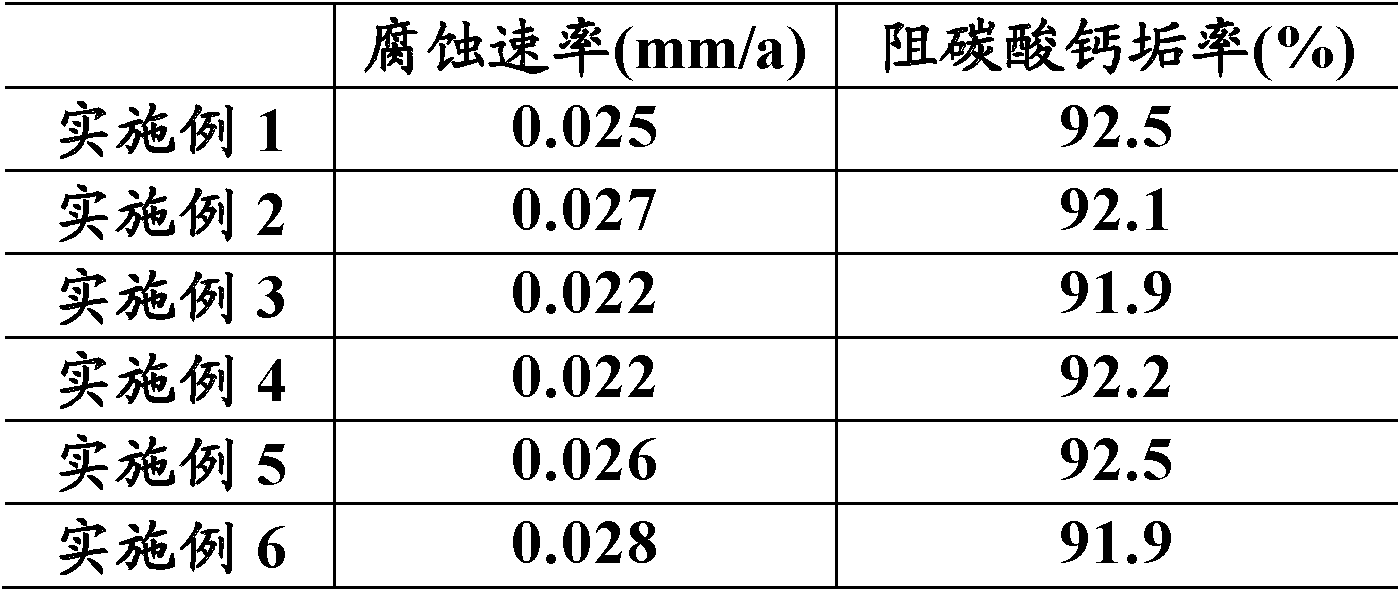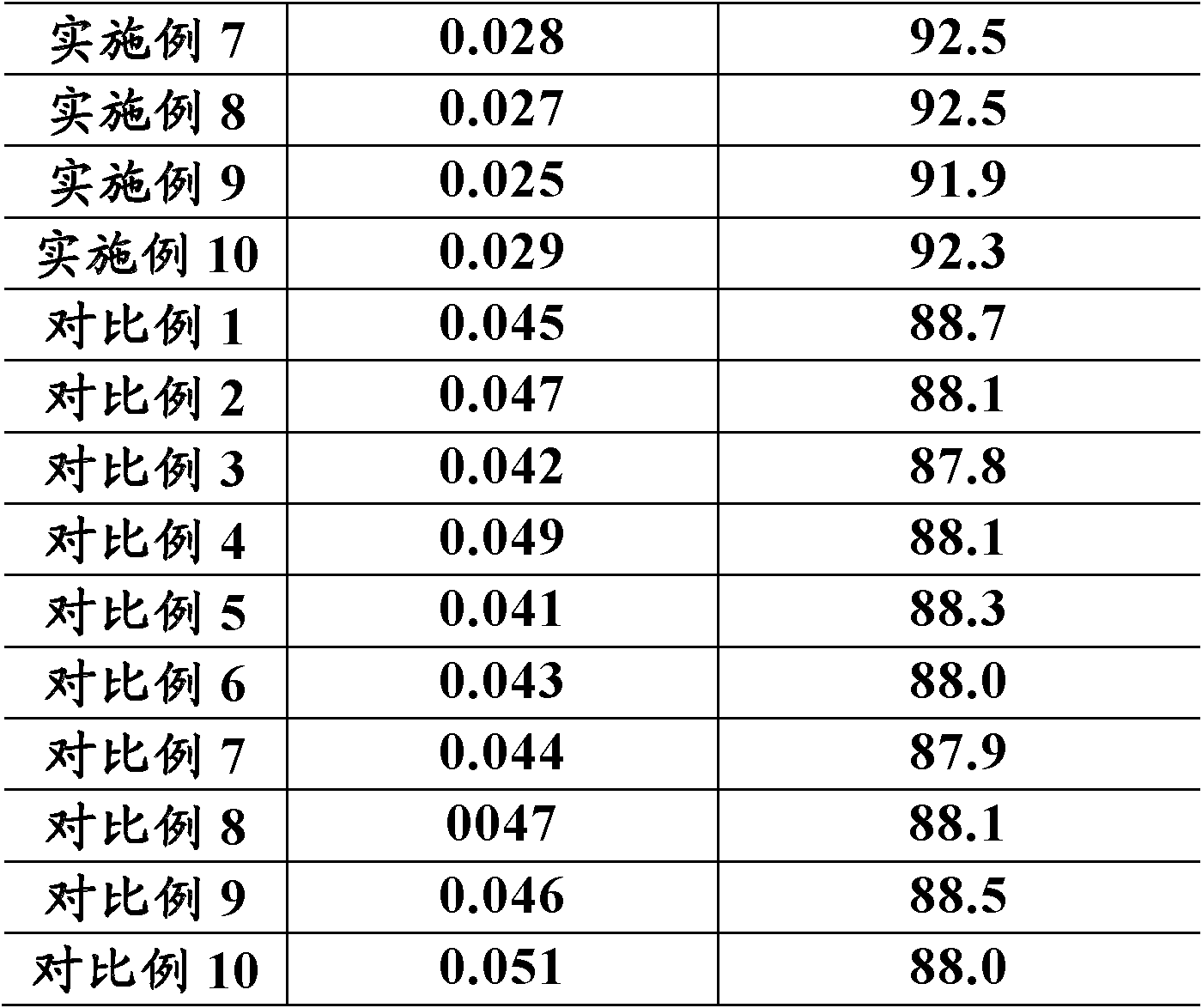Treatment method of circulating water with leaked oil
A treatment method and circulating water technology, applied in the direction of oxidized water/sewage treatment, multi-stage water/sewage treatment, water/sludge/sewage treatment, etc., can solve the problems of expensive biological enzyme purifiers and achieve high concentration Multiples, simple operation, low pollution effect
- Summary
- Abstract
- Description
- Claims
- Application Information
AI Technical Summary
Problems solved by technology
Method used
Image
Examples
Embodiment 1
[0049] The preparation of scale and corrosion inhibitor: 8.8g of zinc sulfate heptahydrate is dissolved in 39.9 grams of water, and the dissolution is even, adding 8g of effective content is 50% PESA (polyepoxysuccinic acid, the limit viscosity number at 30 ℃ is 0.038 dl / g), adding 43.3g solid content is 30% acrylic acid / hydroxypropyl acrylate copolymer (the mass ratio of acrylic acid and hydroxypropyl acrylate in the copolymer is 7: 3, and the limiting viscosity number at 30 ℃ is 0.068dl / g), shake well.
[0050] When the prepared scale and corrosion inhibitor solution is added to the test water at a concentration of 100 mg / L, PESA, acrylic acid / hydroxypropyl acrylate copolymer, Zn 2+ The effective concentrations are 4mg / L, 13mg / L and 2mg / L respectively.
[0051] Add 200mg of pyrolysis gasoline to the beaker for corrosion inhibition test, add 50mg of pyrolysis gasoline to the volumetric flask for scale inhibition test, then add sodium dodecylbenzenesulfonate 95mg / L and Tween...
Embodiment 2
[0053] Preparation of scale and corrosion inhibitor: 32.5g effective content of 40% PASP (polyaspartic acid, limit viscosity number at 30°C is 0.068dl / g) was dissolved in 40.8g water, and 26.7g solid content was added 30% acrylate / styrenesulfonic acid copolymer (the mass ratio of acrylate to styrenesulfonic acid in the copolymer is 7:3, and the limiting viscosity number at 30° C. is 0.071 dl / g), shake well.
[0054] When the prepared scale and corrosion inhibitor solution is added to the test water at a concentration of 100mg / L, the effective concentrations of PASP and acrylate / styrenesulfonic acid copolymer in the water are 13mg / L and 8mg / L.
[0055] Add 200mg of wax oil to the beaker during the corrosion inhibition test, add 50mg of wax oil into the volumetric flask during the scale inhibition test, and then add 50mg / L of sodium tetradecylbenzenesulfonate and 4030mg / L of Tween respectively. The test results are shown in the table 2.
Embodiment 3
[0057] Preparation of scale and corrosion inhibitors: 20g effective content of 50% PESA (limited viscosity number at 30°C is 0.049dl / g), added to 41.37g of water, and 16.7g of 30% polyacrylic acid ( The limit viscosity number at 30 ℃ is 0.069dl / g), then adding 16.7g solid content is 30% acrylic acid / 2-methyl-2'-acrylamidopropanesulfonic acid copolymer (acrylic acid and 2-acrylic acid in the copolymer The mass ratio of methyl-2'-acrylamidopropanesulfonic acid is 7:3, and the limiting viscosity at 30°C is 0.071dl / g), 5.23g of zinc chloride is added, and shaken well.
[0058] When the prepared scale and corrosion inhibitor solution is added to the test water at a concentration of 100 mg / L, PESA, polyacrylic acid, acrylic acid / 2-methyl-2′-acrylamide propane sulfonate Acid copolymer and Zn 2+ The effective concentrations are 10mg / L, 5mg / L, 5mg / L and 2.5mg / L respectively.
[0059] Add 200mg of light diesel oil to the beaker during the corrosion inhibition test, add 50mg of light d...
PUM
| Property | Measurement | Unit |
|---|---|---|
| Ultimate viscosity | aaaaa | aaaaa |
| Ultimate viscosity | aaaaa | aaaaa |
| Ultimate viscosity | aaaaa | aaaaa |
Abstract
Description
Claims
Application Information
 Login to View More
Login to View More - R&D
- Intellectual Property
- Life Sciences
- Materials
- Tech Scout
- Unparalleled Data Quality
- Higher Quality Content
- 60% Fewer Hallucinations
Browse by: Latest US Patents, China's latest patents, Technical Efficacy Thesaurus, Application Domain, Technology Topic, Popular Technical Reports.
© 2025 PatSnap. All rights reserved.Legal|Privacy policy|Modern Slavery Act Transparency Statement|Sitemap|About US| Contact US: help@patsnap.com



